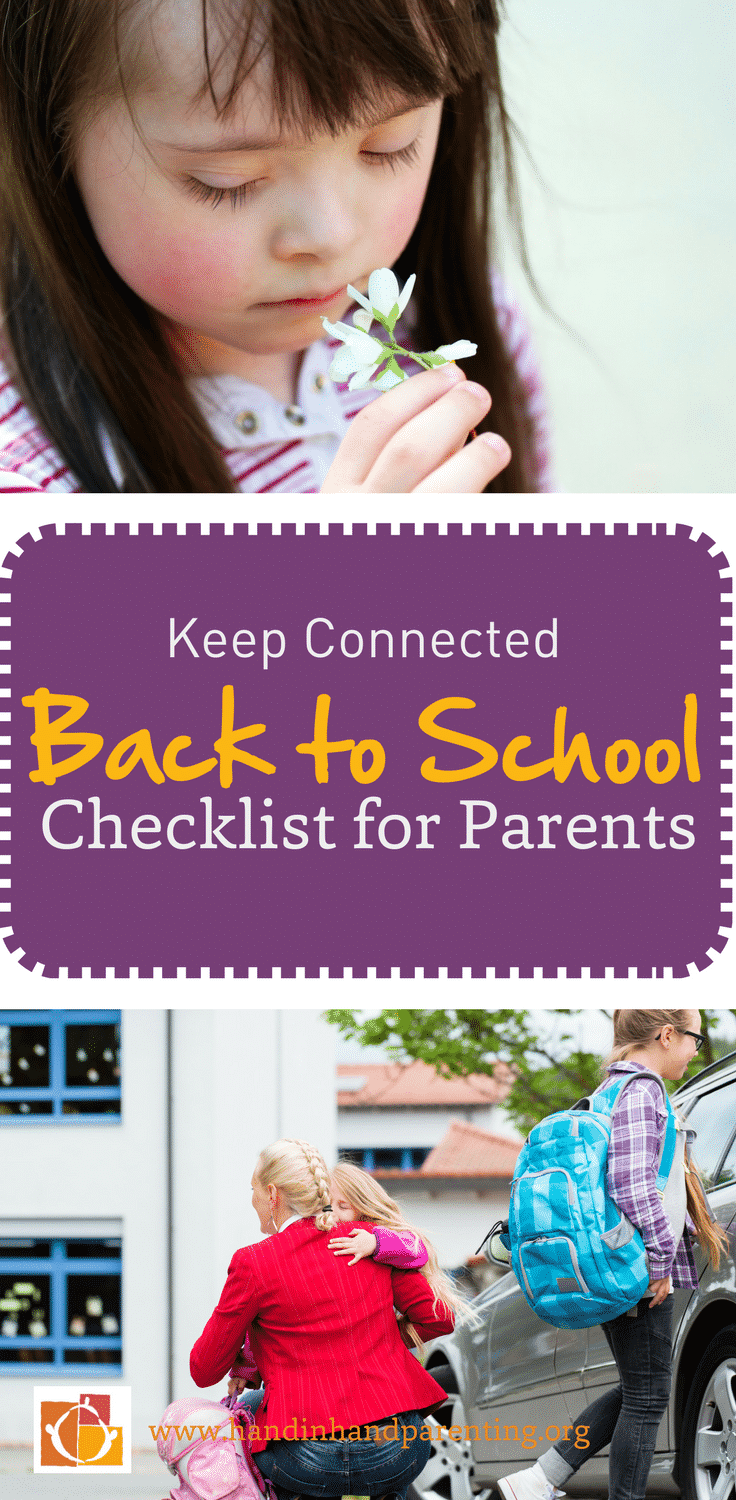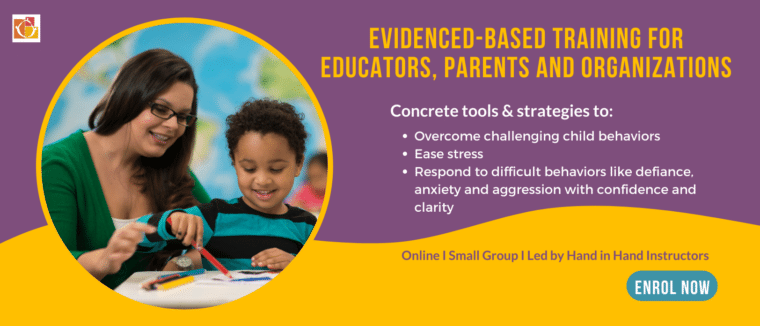 Recently, I took my younger daughter to her preschool after a vacation break of 10 days. This transition back to our usual rhythm, and her emotional response to it, reminded me of the many times over the years that both my daughters (ages 3 and 9) have clearly shown me that going to school is not always easy, especially when it is a new venture, or after a long break.
Recently, I took my younger daughter to her preschool after a vacation break of 10 days. This transition back to our usual rhythm, and her emotional response to it, reminded me of the many times over the years that both my daughters (ages 3 and 9) have clearly shown me that going to school is not always easy, especially when it is a new venture, or after a long break.
On this recent morning, things began as usual, and then, when I mentioned we would be leaving the house soon, my usually preschool-eager little one wailed, “I don’t want to go!”
I responded with what I hoped was calmness and warmth.
“I hear you, honey. Today is a preschool day, though.”
Got Connection in That Backpack? Make it a Must
I did not have the flexibility that day for her to not attend preschool. But even if I did, I would have set a limit that she would go, as I recognized her resistance to preschool was not an indication that anything was wrong with her preschool experience.
In this instance, I knew it was all about me—or rather, my daughter’s sense of connection with me.
She was in the midst of a bumpy time. Vacation was over, she had recently weaned from breastfeeding, and she had some feelings stored up inside.
So, I listened, providing the space for her to let go of some of those feelings.
I stayed close to her while she spent some time spewing anger at me. “You can’t make me go!”
I stayed grounded and simply said, “We are going to go today, sweetheart.”
In letting her know there was no room for a different plan, she had something to ‘push up' against, so to speak. The limit that I gave her allowed her to shed some anger and then some tears, until they were all out. She felt much better, and we shifted into playing with her toy figures together.
She asked for a snack for the stroller ride, and then she offered to make me some food (in her play kitchen). She gave it to me (it was invisible), and off we went!
My older one will be entering fourth grade this year, and I expect that I will see variations of the above situation—as I have many times before—in the beginning weeks of school with her, too. When I remember that, like clockwork, feelings surely will arise at the start of school, I can support her to make the emotional transition. I have put together a school-related connection plan, based on the tools I’ve learned from Hand in Hand Parenting. I hope it will help you, too!
A Checklist For Keeping Connection High During the Back To School Transition
One week before school starts:
-
 Short, timed, parent-child Special Time daily. I will aim to have 10 to 15 minutes of one-on-one time with each child, during which they get to call all of the shots with my 110% enthusiasm while I join them in the activity of their choosing. This simple act helps fill up the child’s “connection cup,” helping them feel more in tune with us, their parents. I love this time, too, as I often learn a little something new through really seeing—without allowing any distractions—how my child plays and engages with the world.
Short, timed, parent-child Special Time daily. I will aim to have 10 to 15 minutes of one-on-one time with each child, during which they get to call all of the shots with my 110% enthusiasm while I join them in the activity of their choosing. This simple act helps fill up the child’s “connection cup,” helping them feel more in tune with us, their parents. I love this time, too, as I often learn a little something new through really seeing—without allowing any distractions—how my child plays and engages with the world.- Regular conversations about coming transition. I will bring up the fact that school is around the corner at times I feel are appropriate and unrushed. This is useful for logistical and conversational reasons, certainly. But the main reason I include this in my connection plan is because if there is any negativity or fear about the transition lurking below the surface for my child, then my mention of school is likely to bring up feelings. That is a good thing. During these times, I will practice what Hand in Hand calls “Staylistening.” In my family, when we support the outpouring of feelings in the days before school starts, any feelings that are still left over when it actually starts are likely to be less intense.
- Family laughter. I will plan at least a couple times for the whole family to have some fun together. I am not talking about outings so much as time together being silly and active and getting out some giggles. Think water balloon tosses, pillow fights, a bucking-bronco competition on a cushiony surface—whatever types of games generate laughter and give my children a chance to feel big and powerful while we as adults take on the role of the weaker and more inept. Kids do not always feel in power at school; I want them to have some good belly laughs with me while they exercise some power.
First day of school:
- Night-before preparation. The night before, I will prepare ahead whatever I can for the “first day” morning. With breakfast, clothing, and backpack all done, there can be some time and space for emotional needs.
- The day’s first vitamin: Special Time. When my child wakes up, I will aim to offer her Special Time—even if there is only time for five minutes. The timer’s indication that Special Time is over often triggers feelings from children, and this is especially likely to happen on a back-to-school morning. I will keep that in mind when deciding the amount of Special Time. If it seems like my child will have feelings to offload, I might do five minutes of Special Time and mentally hold space for 20 minutes of listening to feelings.
- Get to school early. Getting to school early, especially on the first day, is a good idea for many reasons. On the connection front, though, there might be some more feelings to listen to when the car is parked. Or perhaps there is time for a few minutes of Special Time, or at least your undivided, loving attention, right there on school grounds. That can be a wonderful way to give a child an emotional boost for that big first day.

First week of school:
- Special Time daily, or regularly. I will plan for as much Special Time as is possible in this first week. After school is a great time, though sometimes, with my older one, I wait until later in the afternoon, if she is not ready to jump into connection time with me immediately.
- Listening for your child. If there are hardships for my kids in their first weeks of school, they will show me through tantrums or off-track behavior. I try to respond by warmly and calmly setting a limit (“I can’t let you do that”), which often opens the door for feelings. And again, that is a good thing. I try to remember that my children’s anger and tears about not getting such-and-such or not getting to do such-and-such are their way to let go of tension about issues that feel hard or scary.
Over time, I have found that playing and listening to my children in these ways has helped them become more flexible, more confident, and more likely to embrace, rather than fear, the new challenges that come with big transitions.
And What About Me? Parents Need Support Too
I would be remiss to not mention that, throughout the whole journey—leading up to school, starting school, and adjusting—we parents need emotional support for ourselves, too. A lot of feelings come up for us, especially when our children start school for the first time or enter a new school.
Make sure you get some emotional support, too. You might want to talk about your worries or frustrations with a friend or with a trusted family member. I find support and sustenance through my listening partners, other adults whom I trade “listening time” with on a regular basis. That’s where I get to express my own upsets, and where I’m trusted to figure things out. It is only when I am emotionally nourished that I feel able to effectively listen to my children while they work through the big feelings in their way. It is a team effort!
Learn The Hand in Hand Approach
Five simple tools for happy, peaceful, loving families.
